- Pingback: Frictionless Event Payment System - Oveit
Conference Registration – a Full Guide
We’ve seen literally hundreds of conferences registrations and we’ve noticed one thing: no one talks about the best ones. You only hear about the lousy ones. The ones where people couldn’t register. Or didn’t get their confirmation mail. Maybe they couldn’t pay. Perhaps the live stream didn’t start. Do you know of a conference registration where the lines were long and boring? Yeah, we’ve seen some.
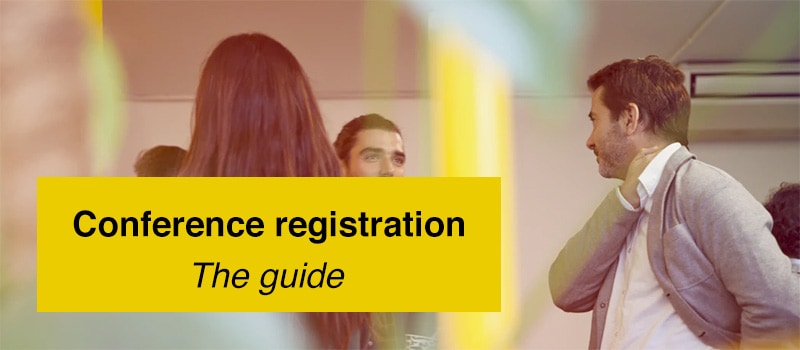
It’s easy to get lost in what not to do. But that’s not really useful. The prepared conference planner has to know what exactly to do prior to the event and during the day of the event. She knows what are the best strategies and in what order they should be applied, what are the potential bottlenecks and how to avoid the pitfalls.
We’ve put together a simple, straight forward guide on how to navigate the conference registration process to arrive at a successful event day.
Here’s what you need to do:
Pre conference registration
You will start your conference registration months in advance and you will get in so much detail with speaker arrangements, venue setup and so on. But don’t forget who you’re building this for: your visitors. They need to know you are building an amazing conference, when it happens, they need to know where to register and the whole flow needs to be spotless or your marketing budget and efforts are not going to reach their potential.
So here’s what you need to get right:
Who will attend the conference?
You probably have a good understanding of the market the audience for your conference, the cool trends, you know how to put the show together. But here’s the most important part: understand your audience.
You can do interviews with prior visitors, research personas and at the end you will reach to a core set of target visitors you want to reach. You will know you’ve reached a good understanding of your target audience when you know:
- where do they work (industry, type of companies, size etc.) ?
- what are they passionate about (topics, products, lifestyle, gadgets etc.) ?
- what is their age range ?
- where will they come from (or view your conference from) ?
- is there any speaker in particular they would want to hear?
Of course – there might be some industry or conference related questions that you might focus on but this is a good start.
Next up … where do they register?
Where will your conference registration happen?
This is meant from two perspectives:
- where is the digital place they register on prior to the event ?
- during the day of the event – where will you set up the physical registration desks, the places where they get checked in and receive their badges. For virtual events – where will the land during the event day and where will they watch the live stream?
Let’s focus on the first one. There’s basically two options: one is hosting the conference registration on a third party system. This works if you’re planning a startup conference.
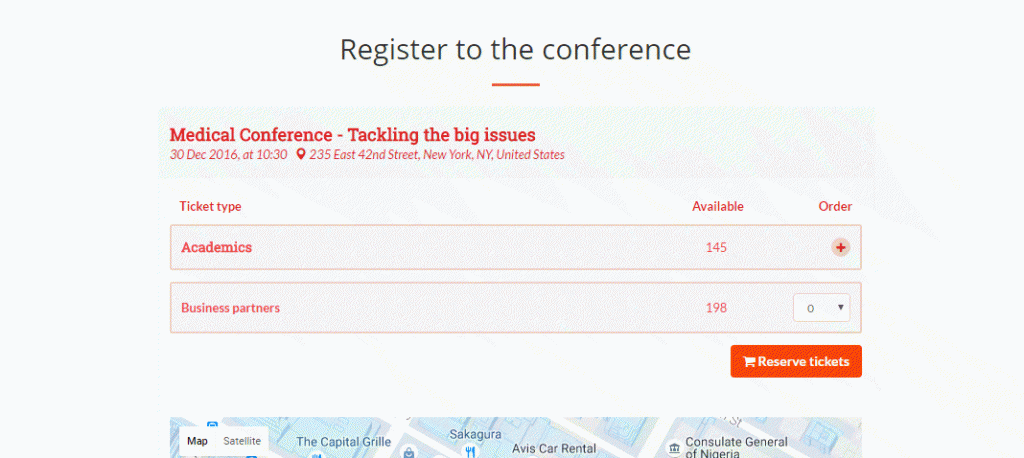
If you are planning a larger conference that has some branding to it, or if you are planning an internal company conference – then you need your own website and a tool which helps you embed the conference registration on your own website. This helps you establish credibility and improve your brand recognition. It’s a bit of a must if you are planning a company conference and you are a slightly larger company.
Let’s go for virtual now …
Registering for virtual or hybrid conferences
First off – let’s make sure the terms are correctly understood:
A virtual conference is a conference which is mainly experienced via a live stream. It sometimes offers networking tools as well as interactive options. It may offer digital pre-recorded media and additional content on the landing page.
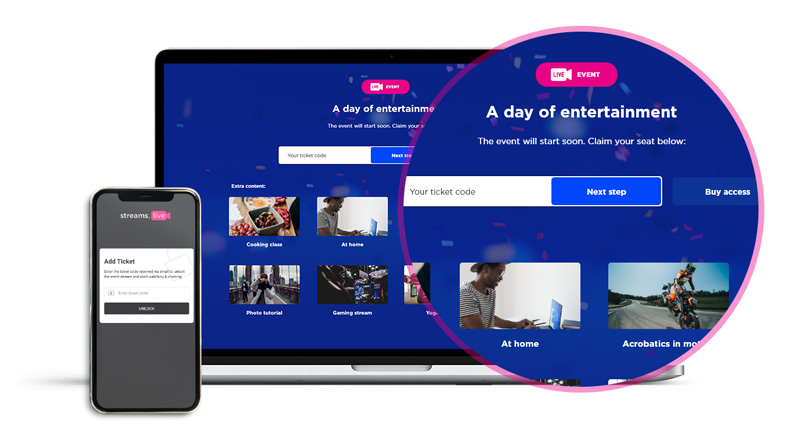
A hybrid conference is one that allows you to attend it both in person, as well as digitally via a virtual event, usually in the form of a live stream.
Registration for these kind of conferences is very similar to the usual, in-person conference registration. There’s one big difference – the visitor needs to be informed on how to reach the virtual conference and how can they use their event credentials to access said virtual conferences. You will need to use a virtual events software to make sure everything goes according to plan.
Collecting conference visitor data through forms
There’s two main reasons you want to collect conference visitors’ data during the registration:
- you want to understand your audience better so you can tailor the content for them and improve your event year after year
- using visitor data you can personalize their experience and improve the overall feeling. Doesn’t it feel wonderful when our experiences are really ours?
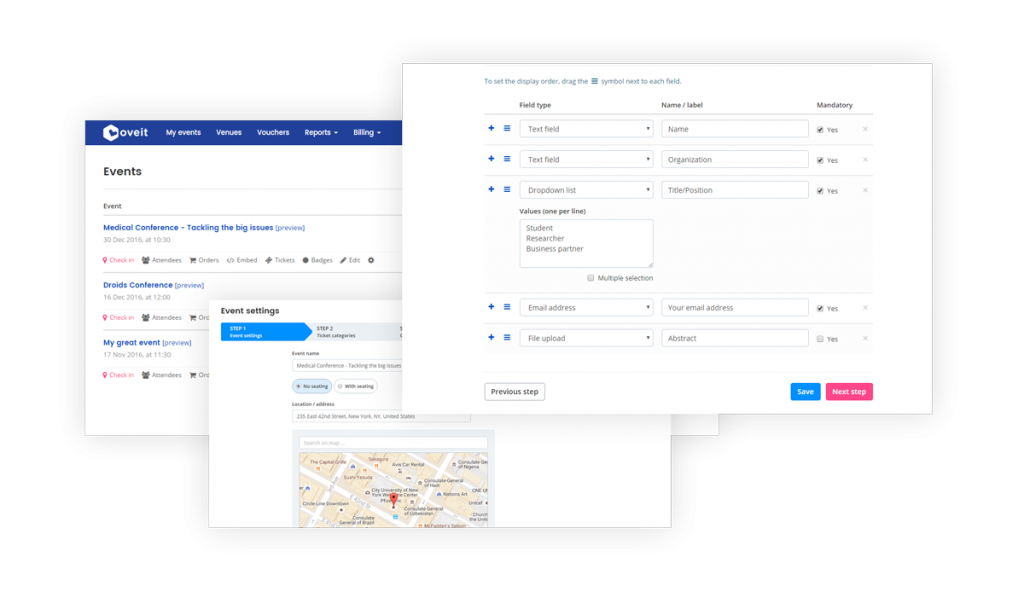
You can use an event registration software that provides registration forms to create the perfect data format. It should be kept to a maximum 7 entries as to not bother the conference goer and they should answer most of what you want to know about your visitor.
Creating tailored conference registration with add-ons
For a very, very long time access to events has been limited to binary options: you either get in or you don’t.
But now things have changed. What if you want to allow your visitors to join the main conference but also selected seminars? Maybe also have a conference dinner and join the after-party?
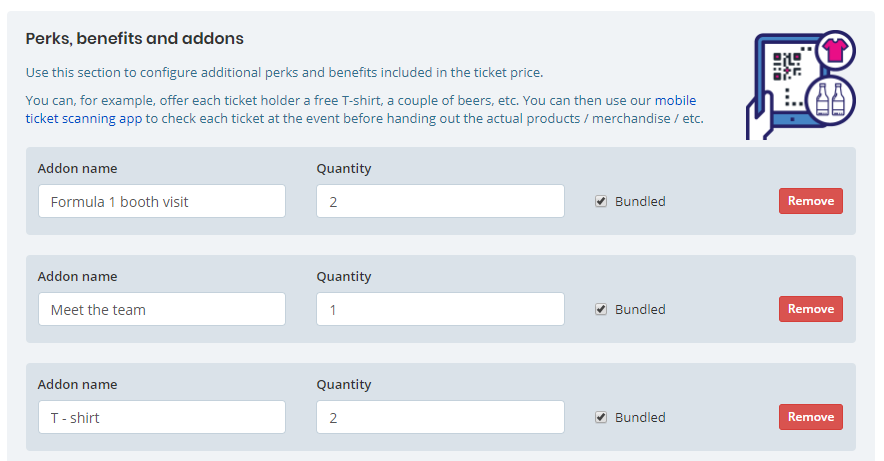
Maybe you want some of the visitors to have access to some swag such as t-shirts or a goodie bag which would be requested at a special place in your event?
Now you can. A very limited number of event registration tools offer the possibility of adding all sorts of add ons to the tickets you send to your visitors. Make the experience personal using add ons.
Receiving conference registration payments
Most of the conferences out there are made possible by a combination of two revenue streams:
- advertising (from sponsors, advertisers or other companies targeting your audience)
- registration fees

If you charge a registration fee you will usually receive it either through direct credit or debit card or through bank transfers. The bank transfer option is usually catered to B2B sales like companies that have a purchasing or financial department that needs to clear transactions before they happen.
Make sure you set up several pricing tiers to allow different kind of buyers and make it as simple as possible for your customers to send you the payments.
Issue invoices for conference registration orders
After the event you will need to issue invoices or receipts based on the place you’re doing business on. Fortunately, most of the conference registration software tools offer this option.
Following up after the conference registration
It’s great – now you’ve set up your event registration on your website, set up the data collection forms, set up pricing and you’ve connected a payment processing account. Now you can back to managing the speaker list. Or can you?
One of the biggest mistakes that we’ve seen is not having a proper follow up after payment is processed. This can be a thank you page, followed by an email containing tickets and registration information.
Make sure your guests are properly welcomed at the future conference of their dreams, they understand you value their commitment to your conference and they know how to get to it. At the very minimum.
Add a personal touch and offer the full details on arriving to the destination, a help line, additional materials that can help the enjoy the conference at its best.
Sending conference registration details, prior to the day of the event
As mentioned at the beginning of this guide – you will start marketing your conference, hopefully, months in advance. That means that as the conference date is getting closer – you need to remind your guests that they’ve registered, how to find their tickets, what will happen during the day of the event and … to have fun.
You should probably do this a few times prior to the event, as it’s getting closer, just to build momentum. At the minimum – send a reminder prior to the day of the event, with details on how to get there, when to get there and how everything will happen.
Conference registration on the day of the event
The day of the event is here. One thing you should know – and this is very, very important – is that this is a make it or brake it moment. If you don’t prepare well for the registration on spot, you will have problems, especially if you are expecting more than 500 people.
Be prepared, plan, have more staff than you think you need. Get all the equipment ready, check the internet connection twice and make sure you have backup. You are ready to go.
Managing access to the conference
Access to the conference, whether it’s online or in-person is a key factor to maintaining a positive feeling from your guests, as the show starts.
Here’s what you need to focus on:
Printing conference badges
One of the non-digital aspects to any conference that still somehow holds on is badges. Just putting your guests name and possibly company or position on a badge makes it much easier for them to network.
The best performing event registration software allows guests to either print their badges at home (to avoid queues) or print them on the spot. They show their QR code ticket, and a badge is automatically printed.
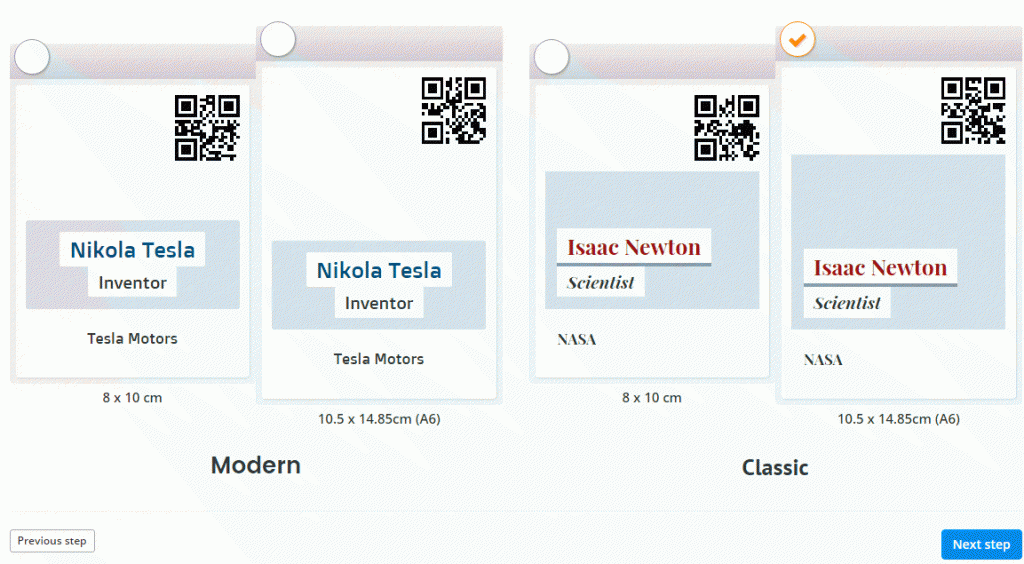
There’s many ways you can design a badge but keep in mind that: they are used for networking so the name should be visible and that they are usually a memento, if your conference is awesome. So make them pretty yet have the key details visible.
Sometimes badges are preprinted and on the day of the event, to speed up registration, a sticker containing personal details is printed and attached to the existing, pre-printed badge.
Making sure high conference registration peaks don’t ruin the experience
Both in-person and virtual conferences have a clear starting time. It’s usually a range (between, let’s say, 9:00 and 9:30 AM). This makes it easier to handle large numbers of people coming in.
Make sure you cover for the largest number of people coming in, not the minimum. You will surely have all your registration desks covered at a certain point during the registration. If you are hosting a virtual event – make sure you choose the right virtual event management software to handle all the needed traffic. There’s no going back when the event started.
Virtual conference registration on the day of the event
Virtual conferences are are great but slightly different than the in-person ones. Your guests will probably need the virtual conference link prior to the day of the event.
What do they do when they login? How do they login? We’ve found that using a simple registration code to access the conference works wonders. It’s easy to store and find and you should definitely attach it to the follow up email (see above).
Once they arrive – you should have some sort of lobby where they can see some prerecorded media, interact with other visitors and get a feeling of the overall topic through the topics presented. It’s not the same thing as the in-person conference but this doesn’t mean it can’t be fun.
Tracking attendance after the registration
Alright, you’ve got the show on a roll. What now? Check your stats. See who checked in, who hasn’t, what where the registration peaks and what did the visitors do after they registered and checked in.
This data will come in handy when you are doing your awesome conference again. You’ve just mastered the art of conference registration. Kudos to you 🙌!
Are you ready to start your conference registration? Click here to start it right now.
Article written by .
Mike Dragan is the cofounder and CEO of Oveit and works daily on providing better tools for live experiences. Mike has a background in computer science and loves building digital products.